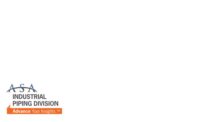Domestic pipe
So the old expression, “What goes up must come down,” seems perfectly applicable when the subject is domestic carbon-steel pipe.
At last report, 3Q16, domestic hot-rolled coils (HRC) pricing was experiencing an increase. Now with anemic demands and the addition of more domestic HRC on line this quarter and next, we are seeing downward pressure on pricing. Even with “import duties” being levied against a significant portion of international HRC manufacturers, domestic HRC continues to give back some of the earlier increases.
As the demand from the energy sector is still low, more and more domestic pipe manufacturers have been attempting to re-enter the standard pipe market, prompting aggressive pricing pressure as well. EXLTUBE is in the midst of expanding its offering to include 8-in. pipe. Wheatland Tube, a division of Zekelman Industries, has had a leadership change with Kevin Kelly (Atlas Tube Division) assuming the president’s responsibility from Randy Boswell, who is retiring. Nucor Steel’s purchase of Independence Tube along with the installation of its large-diameter pipe mill in Mississippi should make the company one of the lowest cost producers of domestic ERW pipe.
Import pipe
Interestingly enough, import carbon-steel pipe prices are rising slightly as the domestic prices drop, which is somewhat unusual. Overall, import steel prices have been very stable compared to domestic, but looking forward there are a couple factors that could provoke a change. First, there are rapid increases in the spot market of coking coal and iron ore. These increases alone could cause the cost of steel to rise by $70/MT or more. Second, with the rise of HRC from China shipping to the Korean mills, it looks like offshore pricing on ERW is on the rise.
With end-of-the-year tax issues looming, inventory purchases will be of the “just in time” variety. If this scenario comes to pass, it will apply downward pressure on pricing. It is a very muddled environment at the moment.
Welding fittings & flanges
The forecast for 4Q16 remains down given continued weak demand for energy projects due to low oil and gas prices. Prices appear to be stable as larger distributors have continued to work off excess inventory. Everyone is watching prices after the petition by Weldbend and Boltex to the U.S. Department of Commerce and the U.S. International Trade Commission was approved. These companies had filed a claim that the domestic industry was materially injured due to unfair pricing and government-subsidized imports from India, Spain and Italy on these products.
Commodity steel prices are forecast to remain stable as the market continues to adjust to current demand levels and we begin to see the impact of increased tariffs on Chinese steel.
Forged-steel fittings
The forged-steel fitting market remains relatively soft. Major markets, such as upstream oil and gas, are still being affected by low oil production rates. Demand for raw material, SBQ (special bar quality), still is soft leading to low input pricing. Forged-steel fitting fill rates are very high for both manufacturers and distributors throughout the country. Import material has continued to flow into the market, also creating strong supply. Pricing has remained stable and there are no foreseeable changes in the marketplace.



